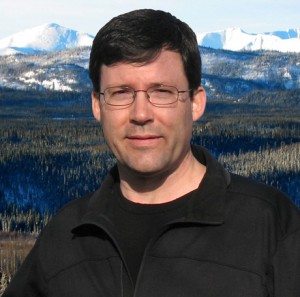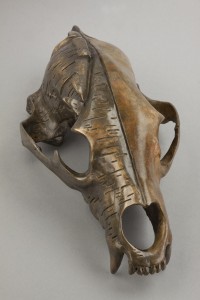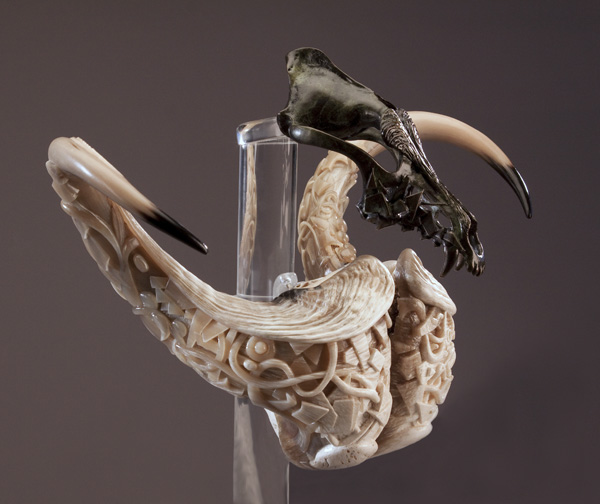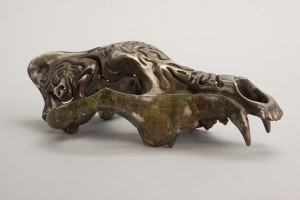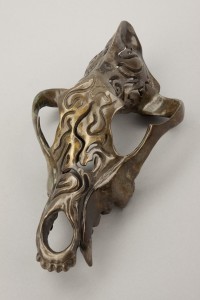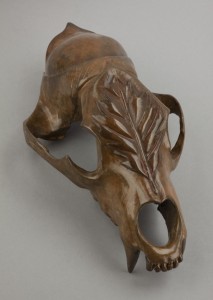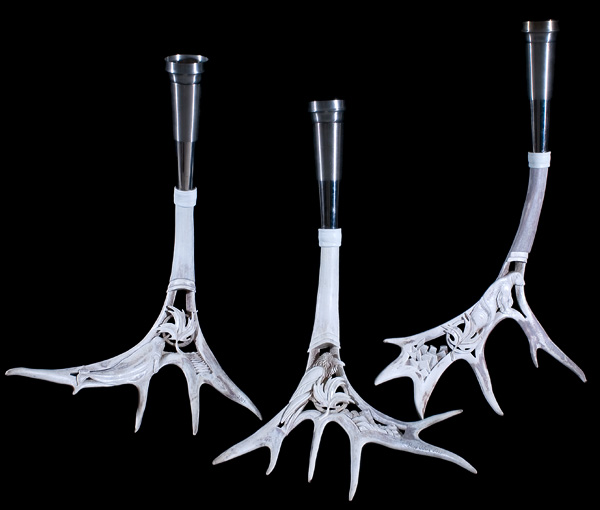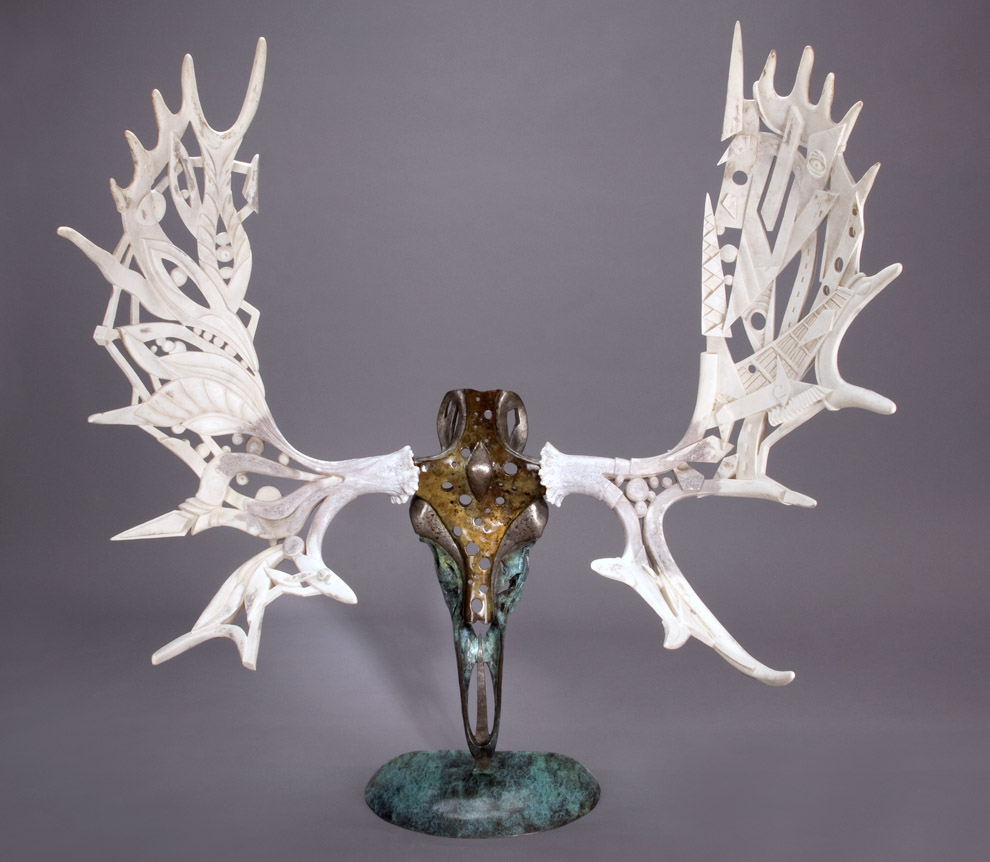Interview with Shane Wilson
Interview by: Joel Irwin
i) Your works transform natural objects into complex, artistic expressions. Can you explain the influence of the “natural” over your artistic designs?
I carve animal-based natural found objects: skulls, antlers, horns and tusks. These objects inspire me by their inherent beauty and grace. Each one forms a unique, ‘living’ armature upon which I create my abstracted sculptures, giving form to my thoughts and feelings about existence, consciousness, and meaning.
In the case of the bronze ‘Silvi-Skullpture Series, 2011’, which will be displayed at the Algonquin Arts Centre, the ‘natural’ provides a very specific additional influence. It takes ‘Forests’ as its primary theme. The unique (1 of 1) bronzes employ design elements from trees native to Algonquin Park worked into animal skulls, also native to the Park, which symbolize the symbiotic relationship between the forests and much of life on this planet.
ii) Is the concept of metamorphosis significant for your works? If so, how?
I delight in taking found skulls, horns, antlers and bones and transforming them into fine art, expressions of the highest order, objects of rare beauty. The process of transformation is documented on my website, www.shanewilson.com, on the ‘In Progress’ page, where the metamorphosis from lichen covered bone to radiantly pure sculpture is revealed in word and image.
iii) The poet Gillian Sze has described a magical and enchanting quality to your work. What, do you think, is the source of such a quality in your pieces?
I confess both surprise and joy at some of the unique reactions to my work. It may be a sign that the works have taken on a life of their own, creating impressions and making connections not foreseen or intended. Like children do, once away from home and out in the world.
Freeman Patterson, the great Canadian photographer, describes a childhood experience during a recent Ideas interview on CBC which may shed some light on this question. Farm life left his family little spare time for niceties, including Christmas. But, according to Sherman, his mother wanted to make the day special, so “she trimmed the Christmas Tree after I and my younger sister went to bed. God knows I don’t think she slept that night, but she would trim it with such magnificence and care that it was sheer magic when we woke up on Christmas morning. We thought Santa Claus had trimmed the tree.”
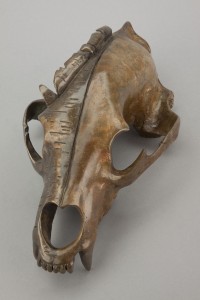
Black Bear Birch - Bronze
I try to lavish “such magnificence and care” on my art by giving over completely to right-brain creativity, that well-spring of partly sub-conscious and mostly unconscious genius that works parallel to and apart from the left-brain logic and calculation employed in daily life. The right-brain enables a movement beyond repetition and cliche, to the creation of something truly new.
iv) People have admired the story-telling elements of your pieces. What role does story-telling play in the production and final product of your work?
Meaning is important to me. Original art expresses a coherent language, a language of the right-brain, whose syntax is colour, texture, form and symbol, grasped intuitively.
When we set out to translate this language into left-brain vocabulary, so much is lost. The best way I have found to communicate the meaning of my work in words is to tell its story in the snippets that are revealed to me as I create each piece. The larger, more complex works usually carry a longer, more complex story. Lately, I have collaborated with poet Gillian Sze and spoken word artist Cat Kidd, to layer their art upon my own in an ekphrastic, multi-media effort to communicate more completely the meaning of one of my sculptures, entitled, “Self Portrait”.
Additionally, another story element arises during the creation of each sculpture, which is documented on the ‘In Progress’ page of my website.
Invisible to the viewer of my art are the countless other stories by authors, famous and not, which accompany me as I work. Books on tape and, lately, spoken word books have entertained me hour upon hour for thousands of hours, during the creation of every sculpture I’ve made. When considering my oeuvre, I am often reminded of many of these stories.
v) What is it that your works are meant to convey to the viewer?
Though each of my sculptures are unique, carrying their own story and meaning, I employ common themes or design elements which function as a sculptural language.
The two basic elements of this sculptural language are the curved and the angled shapes or patterns which represent ‘duality’, the dance of polar opposites which form the basic nature of reality as experienced by the self-conscious, mortal soul.
Existence presents to us fundamentally as duality, the greatest of which is the Life/Death duality which extends to everything in our experience. It is the filter through which we perceive our lives. There are many dualities: I/Thou, Us/Them, On/Off, Light/Dark, 1/0, Creative/Rational, Liberal/Conservative, Human/Machine, Unconscious/Conscious, and so on.
The theme of duality is woven throughout my work. More obvious in the abstract pieces, the theme is also present in the realistic sculptures of wildlife. In the ‘Silvi-Skullpture Series’, the theme of duality is embedded in the design elements of tree bark, leaf, seed and nut.
vi) As the name “Skullpture Series” suggests, your work turns objects of decay, i.e. antlers, bones, etc. into objects of art. Is there a special significance for this kind of transformation?
I love the shape, power and beauty of found antlers and bones. To me a skull represents the absolute triumph of life in an incomprehensibly vast universe – a positive statement which give evidence of and celebrates existence.
The ‘Silvi-Sculpture Series, 2011’ explores the interrelationship of our forests with all other life on the planet. Just as I’ve incorporated design elements from the forest trees of Algonquin – bark, leaves, nuts, into these skulls – so too do we all incorporate the stuff of the forest into our daily lives in so many ways: shelter, food, medicine, warmth, energy, communication, and more.
vii) What is the significance of the Canadian North for your work?
My family and I lived in the Yukon for twenty three years, moving south to Vancouver Island four years ago. Living so close to wilderness, living in the midst of wilderness, surrounded by hundreds of miles of virtually untouched, uninhabited wilderness, one comes to appreciate our place in the natural order.
The various media I have chosen for my art: antler, horn, ivory and bronze, come from that place and feel natural for me to sculpt. Not unlike our distant ancestors, who used the same bone, ivory and horn to create the objects of beauty and distinction we observe today in many museum collections.
The North was also very good, very supportive, to myself and to artists of all stripes – a great place to make a beginning or a career as an artist. As the Internet has collapsed time and space into a virtual present, the barriers separating artists and collectors have diminished and northern artists have benefited.
viii) Have you ever been to Algonquin Park? If so, what connection do you, as an artist, feel with the Park?
I have been to Algonquin Park twice.
After criss-crossing the country’s capitals and historic sites and staying in hotels, my parents decided to try camping. They rented a tent trailer and off we struck in the summer of ’70 to explore Ontario’s parks. I was ten. The two days we spent at the Lake of Two Rivers campground was the highlight of the entire trip. My brothers and I explored, swam, built a wooden lean-to shelter, a fire or two under the watchful eyes of the massive jack pines, and we collected cans. Cans were considered disposable in those days and they made a mess of the forest, which ran counter to our pre-adolescent sensibilities. I remember wondering with amazement at my growing strength, measured by a fresh new capacity to crush the beer cans we found, bare handed. Later we learned that these cans were no longer made of steel, but new-fangled aluminum and much easier to mangle.
After visiting Algonquin, we traveled on to Kleinburg to see the paintings of Tom Thomson and the Group of Seven at the McMichael Canadian Art Gallery, many of which feature the Park. Many also featured the Agawa Canyon and shores of Lake Superior, topography familiar to us, since we were from Sault Ste. Marie. We felt a very real connection with these artists as a result, a connection which extended to Algonquin.
My second trip to Algonquin, ten years later, was as a newlywed husband, freshly minted and on honeymoon. Our one night stay in the Park was dampened by a torrential downpour, which soaked through the tent floor and into our sleeping bags. Happily, the experience did not dampen our enthusiasm for each other. We are celebrating our thirtieth anniversary this summer.
Perhaps it is time for trip number three?
ix) What connections do artists in general share with Algonquin Park?
There is something very special, inspiring even, when an artist or group of artists combine with a place to create stunning new works which comes to define that place and those artists within popular culture. Thomson and the Group of Seven have done for Algonquin Park what others have done for other parts of Canada and the world: Emily Carr for British Columbia, Ted Harrison for the Yukon, Ansel Adams for Yellowstone, Georgia O’Keefe for the U.S. Midwest and the Impressionists for Paris.
As those who have made pilgrimages to Paris, Florence or New York, seeking the influences and inspiration of artistic heroes, so too do wildlife and landscape artists seek out Algonquin for its rugged beauty and connection with the Canadian artistic legends who put Algonquin on the map with palette, brush, canvas and paint.
x) You have received much attention for your design of the 2007 Canada Winter Games Torches. Can you explain the idea behind their designs?
In 2007, Canada’s three northern territories, Yukon, Northwest Territories and Nunavut, hosted the Canada Winter Games in Whitehorse. The organizing committee of the Games wanted to mount one of the most ambitious torch relays in its history, with the goal of visiting all 84 communities in the three territories – a journey of over 100,000 kilometers.
I was commissioned to create three unique torches for the Torch Relay, one for each Territory. Each torch consisted of a carved caribou antler handle and a metal receptacle for the flame. I chose caribou antler for the handle because the caribou range widely across all three territories.
Each torch was carved with the Canada Games maple leaf logo, an animal representative of the specific Territory, and a 13-part design element representing Canada’s 13 provinces and territories. The Yukon Torch featured a raven and 13 mountain tops of the boreal forest. The NWT Torch featured a polar bear leaping from an ice floe fracturing into 13 pieces. The Nunavut Torch featured a Narwhal swimming in 13 waves of the Arctic Ocean.
The amazing thing for me about this project was following the works of my own hand, my creations, as they travelled across the north via every conceivable means of transport in all conditions, enduring hardship and calamity, sharing in celebration and triumph, and touching thousands of hearts and minds along the way.
I first read the book, Paddle to the Sea, as a youngster. How wonderful, I thought, to be the maker of that little canoe and to know that my creation was out there in the world, making its way to the sea! The Canada Games Torch Relay was my ‘Paddle to the Sea’ experience.
xi) You make an interesting distinction in your biography between the appearance of value and the apprehension of real, true value. Can you explain this distinction as it applies to your artwork?
Art reflects and interprets the world in which it is created and serves as a kind of record, going forward, of who we are. This understanding may help to explain some of the iconic contemporary art of our time, otherwise baffling to most as art, which only makes sense in the context of the dramatic excess and denial of consequence which has typified our age and about which we have been warned.
This trend is changing, however, through the efforts of millions of individuals and groups working toward a better future for the whole planet. The emphasis provided by the United Nations’ “International Year of Forests, 2011” is a case in point.
My hope is that our collective emphasis continues to shift from the spending down of our earthly inheritance to the building back of real, sustainable value into both the economy and the planet. As this shift occurs, we will produce goods and services, buildings and systems, communities and cultures that are carefully thought out, well made, durable, contribute to the world, leave a net positive benefit and are beautiful. Our great art will reflect this fundamental shift.
When I make art, I work hard to create something of value – something original, beautiful, meaningful, universal – something which I hope contributes to the human project and captures something of the spirit of those who live in a manner that leave the world a better, richer, more beautiful place.

